Here we are at BBA bread number 39 in the challenge and it's Vienna Bread. Developed in Vienna, Austria, Vienna bread is baked by using ovens that are injected with steam as the bread bakes to add moisture to the crumb of the bread. As the bread bakes with the moisture, the surrounding crust becomes lightly browned, slightly crisp, and flaky in texture while the crumb remains soft. Vienna bread is typically produced as an oblong loaf of bread, but is also available in other shapes. However, as a longer type of loaf, it is a bread that has been attributed with being the origination of French bread, as bakers in France attempted to adopt the steam method of producing their French baguettes. This bread was definitely not a french style, but an enriched loaf with a really beautiful glaze. I was enthusiastic about the addition of the dutch crumb topping and loved the way the loaves looked when finished. You can follow along on page 261 of the book: The Bread Baker's Apprentice or you can find an adapted recipe here. 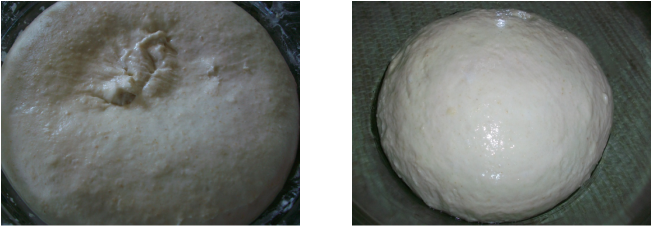 preferment on the left and finished dough on the right This is another two day bread where the day before baking the bread, a preferment is used for flavor. This was an enriched dough as well, for it contained egg, butter, sugar, and barley malt or powder. (I had the malt, so I used it.) The finished dough came together fairly quickly and I was soon able to get it to windowpane, where it was then put into an oiled bowl to rise until it doubled in bulk. 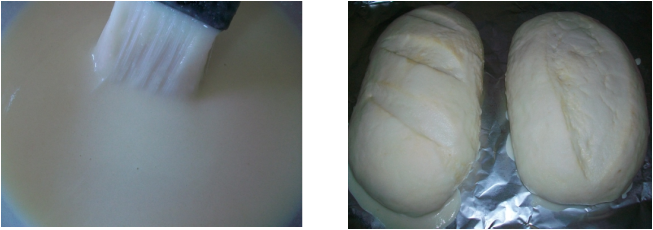 After the first rise, the dough was then divided into two and shaped into batards. In the meantime, I made the dutch crumb glaze and brushed it over the scored loaves. The loaves were then left to rise again until doubled in size. They were then baked in the oven with steam to create the wonderful crust that this bread is famous for. 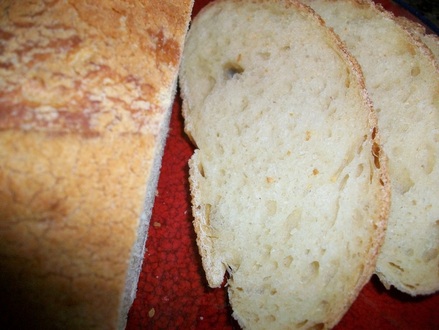 This technique resulted in a light and airy bread crumb that not only looked beautiful, but tasted wonderful as well. It reminded me a lot of a lower fat challah bread, and toasted up really nicely as a vehicle for Nutella. Yummmmm!
Yeaspotted.
2 Comments
Legend has it that, in 1100, in an attempt to force Florence to surrender in one of their endless battles against each other, nearby Pisa blockaded the salt that arrived at her port, preventing it from reaching Florence. Thus, pane toscano (Tuscan bread) was born - the bread famous throughout Italy for being 'sciocco', from the word in the Tuscan dialect for ‘unsalted’. This is just one of the legends, (but my favorite) that tells of the origins of this saltless wonder. While we were in Florence a few years ago, My husband (who is first generation Italian) introduced me to this peculiar bread, and much to my surprise, I loved it! So, I was worried when I got to this bread because so many of the BBA Challengers who went before me really disliked it. Boy was I amazed! Not only did I love this bread, it was ABSOLUTELY my favorite thus far. The crust was deliciously crisp and the crumb was incredibly chewy with a slight sweetness and tang that seemed to permeate and change with every bite. This was a bread experience like I have only dreamed of having from one of my own baked goods, and my husband agreed that this was an exceptional bread. If you are following along with me, you know that I have been baking my way through The Bread Baker's Apprentice by Peter Reinhart using only wild yeast starter as my leaven. This is bread 38 and the recipe is on page 259, but if you still haven't picked up a copy, Susan at WildYeast has a gread adapted version. 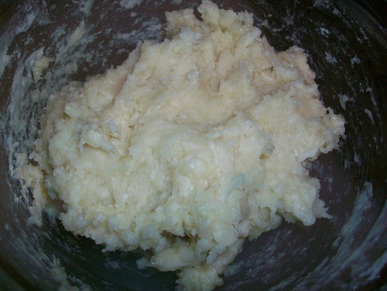 This is another two day bread, but it uses a fascinating method to 'scald' flour using boiling water to gelatinize the starches and to encourage more enzyme activity. I have never seen this method before but according to Reinhart, it can be applied to many of the lean dough recipes so far. This approach really intrigued me, so I will be experimenting with this new-found technique in the near future. 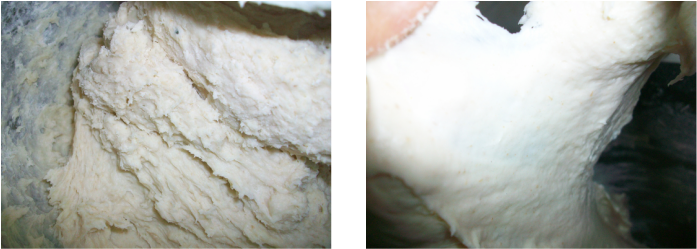 The actual kneading process of the finished dough was a little more difficult than some of the other breads so far. I found the dough to be VERY goopy and lumpy in the beginning stages of mixing, and I noticed that the time it actually took to reach the desired dough consistency and temperature took much longer than I anticipated, and I thought my poor mixer would give out before it did. 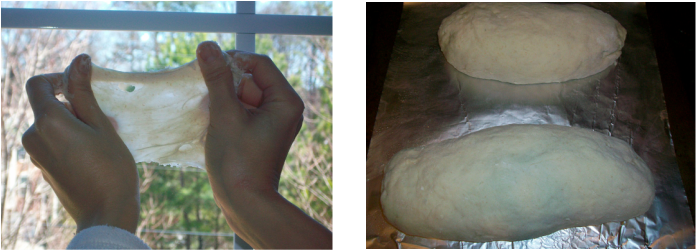 Finally, The dough got to a kind of 'windowpane' stage and I proceeded with the rest of the bulk fermentation. If you have been following along my blog, you will notice that I am trying to use a wild yeast starter exclusively while baking through Reinhart's book, and even though I did not use any salt in this bread, it took forever to double in size(I keep telling myself that patience is a virtue). Even when forming into batards, the second rising seemed to take much longer to rise also. The long fermentation may have had much to do with the final flavor profile of this recipe, for we were rewarded in the end when the bread turned out so delicious.  The crumb was really outstanding; it had the chewiness of really good sourdough(maybe because of my wild yeast starter, or the water bath in the cold oven, or even the long fermentation) and the flavor was a little tangy, a little sweet, and a little creamy. Whatever the reason for being so incredibly yummy, I am happy that it happened. I can say without a doubt that this bread will be made VERY often in our home.
yeastpotted |

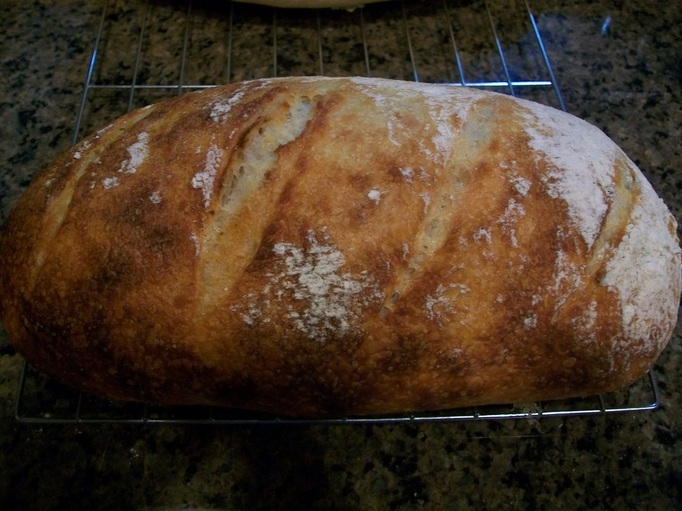
 RSS Feed
RSS Feed